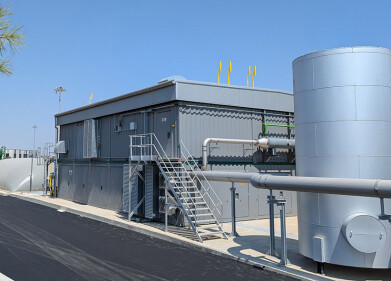Air clean up
Why is India Banning Old Trucks and Buses?
Dec 09 2015
The Indian government has announced plans to ban all buses and trucks older than 15 years from using roadways across the country. The plan will be implemented from April next year and is part of an attempt to curb alarming levels of pollution in India, especially in the capital city of Delhi.
Although the details of the ban are still in their infancy, the government expect to work out the finer points of the legislation within the next two weeks and have it come into force in 2016. One of the most directly affected types of vehicle will be commercial HGVs and trucks, which currently account for more than 50% of all pollution in the country.
A Growing Problem
The air quality problems across Asia have been well-documented, with China in particular having been seen as the most polluted country in the world over recent memory. However, air pollution in China today (including meticulous plans and significant investment to tackle it) is not quite the elephant in the room it once was.
Instead, India appears to have taken over from the eastern nation as the country with the most serious air quality problems. This is largely due to the diesel emissions from inefficient and outdated automotive engines, especially in larger vehicles. However, crop stubble burning in and around farms and the dirt produced during construction also contribute to the rising levels of pollution.
In fact, as of last year, the World Health Organisation (WHO) reported that 13 of the top 20 most polluted cities in the world are in India. With an estimated 600,000 deaths in the nation each year attributable to bad air quality, clearly something must be done about India’s growing problem.
A Multifaceted Solution
As with all problems of this kind in every country on the planet, there is no quick fix to alleviating India’s air quality issues. The outright ban on older models of buses and trucks is certainly a step in the right direction, but it’s only one phase of a multifaceted plan to improving air quality and reducing transport-related pollution.
In addition to this measure applying to larger vehicles, India’s booming car industry must also be addressed. With a whopping 1,400 new cars on streets every day in Delhi alone, emissions can realistically only rise in the foreseeable future. In order to combat this, authorities are considering moving forward plans to restrict emissions from passenger cars by 2019 instead of 2022.
Furthermore, increased legislation on how the cars can be used and where should also be introduced, according to some. “Taxes on cars and parking charges should be raised to curtail usage, and public transport should be expanded,” explained Vivek Chattopadhyay to the BBC, a senior expert on pollution at the Delhi-based Centre for Science and Environment.
While there is clearly still a vast amount of work to be done, it is at least positive to see that the Indian government are taking the first steps in the right direction towards a cleaner tomorrow.
Events
May 18 2025 Algiers, Algeria
23rd International Water Management Exhibition
May 20 2025 Prague, Czech Republic
Jun 17 2025 Guangzhou, China
Singapore International Water Week Spotlight 2025
Jun 23 2025 Singapore
Jun 25 2025 Sao Paulo, Brasil
.jpg)













